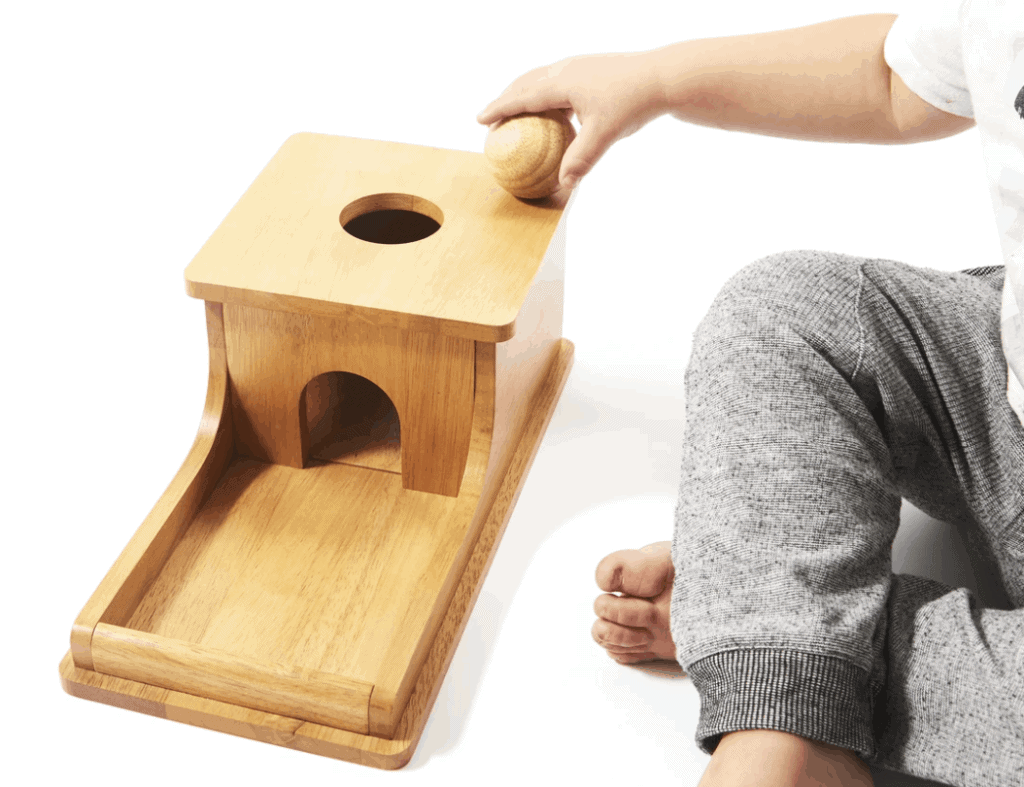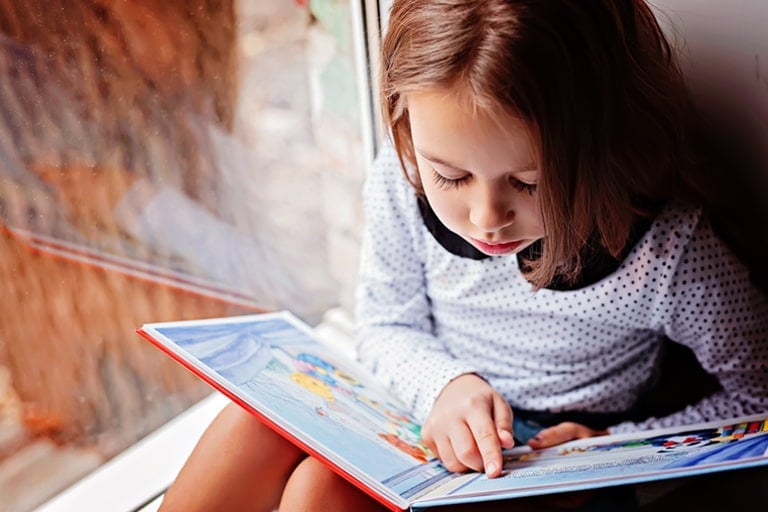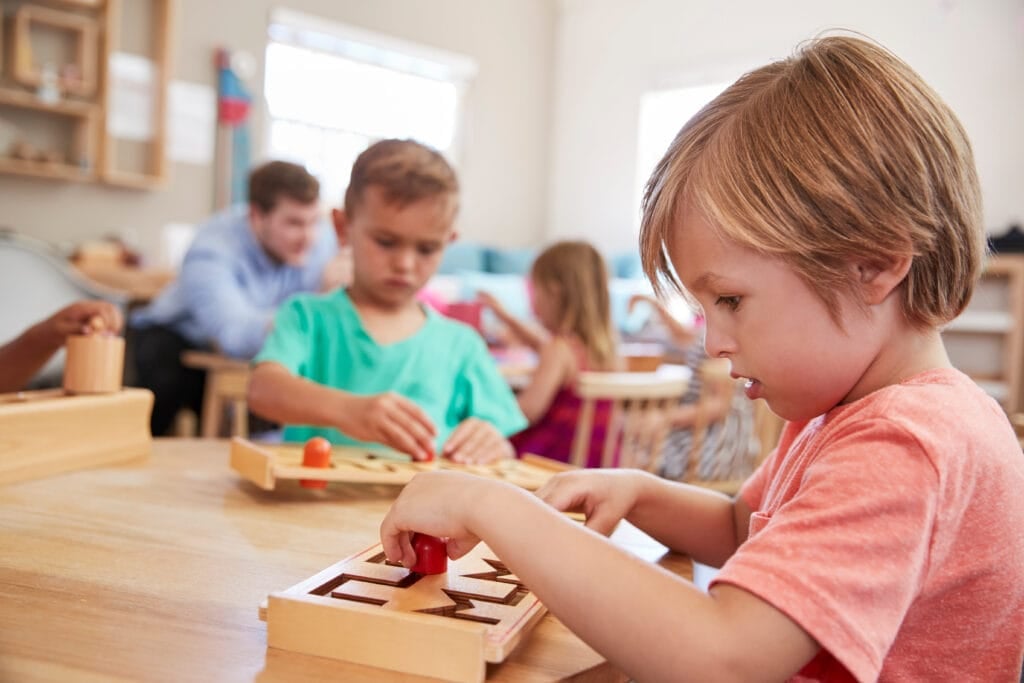Observation is an important element of the scientific process because it lets us see the results of an experiment and assess what can be changed. According to the
Observation is an important part of the
Observation in
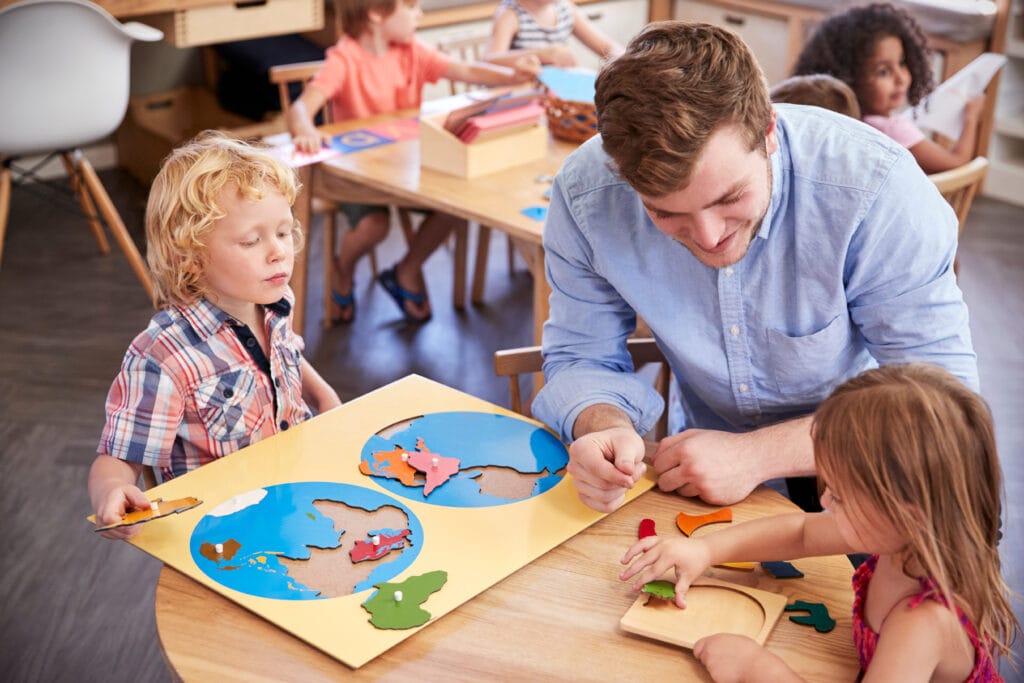
What Is Montessori Observation?
Humans rely on observing for many activities. Early humans relied on observation to understand and adapt to their new environment. They also used observation for survival and connection with others. Observation is no longer crucial for our survival. However, many benefits come from taking the time to observe children.
Observation is the process of objectively monitoring children to understand what they know and how they function. Being objective requires the observer to get rid of any preconceived notions about the child they are observing. The observer should also note and write down everything that they observe.
In the Montessori classroom, observation is a tool to assess children’s abilities, determine the environment, and allow the child to play independently.
Why You Should Observe:
Observation helps the parent or teacher (also called a guide) understand their child/children better. When they observe the child in an uninterrupted setting, they learn about their child’s capability and skill set. Parents and teachers also discover things they would have been unable to identify if they were directly involved with the child.
Observing children also helps the parents and teachers identify the development and achievement that the child has made. For example, they can note that a child is holding their pencil differently than they were before. They can note whether or not the child is interacting with different toys at a higher level.
Observation also helps teachers and parents observe their children as they are, not just how they expect to behave. Instead of the parents or teachers telling the child what they should be learning, their child can show their interests. When the child expresses interest, the teachers note it to utilize that interest in setting up the environment or planning lessons.
“The child is endowed with unknown powers, which can guide us to a radiant future. If what we really want is a new world, then education must take as its aim the development of these hidden possibilities.”
MariaMontessori , The Absorbent Mind
The Montessori Philosophy of Observation
Maria Montessori and Observation
Maria
Maria Montessori was a medical doctor and a scientist, so she was trained in observational skills. Maria observed children playing with crumbs on the ground in a bare room for her first assignments. After this, she sought to develop educational materials that children can manipulate and learn from. She developed these materials by observing how the children interacted with them.
“Even when helping and serving the children, she (the teacher) must not cease to observe them because the birth of concentration in a child is as delicate a phenomenon as the bursting of a bud into bloom.”
—MariaMontessori , The Absorbent Mind
Not only did
Why Observation Is Beneficial:
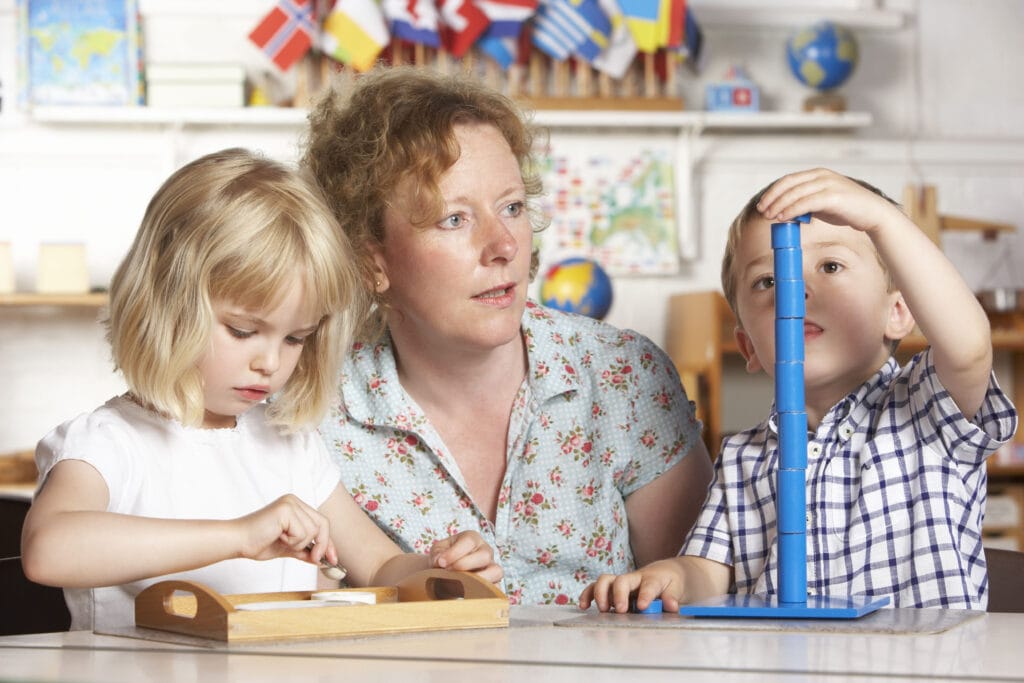
Observation has many benefits, to both the teachers and the children. Teachers in Montessori use observation to help them set up the environment. According to the
To properly set up an environment, the teachers use observation to determine what the children want to learn. They also use observation to determine what skill level they are currently capable of. The environment then reflects this observation and is set up to help the children succeed.
Observation also allows children to foster their sense of competence and independence. During observation, the teacher persuades the child to explore on their own and follows their direction. The child is in charge, so they get to learn and discover at their own pace. This freedom gives them a sense of competence and helps fuel their independence.
Following the Child:
As briefly addressed above, part of the importance of Observation in
When you follow the child, you gain an understanding of the inner workings of their mind. You learn to empathize with them and gain a greater understanding of their behavior and motives. Learning from and following the child means meeting them where they are, not where we expect them to be.
“Follow the child, they will show you what they need to do, what they need to develop in themselves, and what area they need to be challenged in. The aim of the children who persevere in their work with an object is certainly not to ‘learn’; they are drawn to it by the needs of their inner life, which must be recognized and developed by its means.”
MariaMontessori
However, following the child and observing them does not mean that they can do whatever they want all the time without consequence. It is more about observing and following the pattern of the child. If a child needs to spend more time on a skill or in a specific area, we allow them the time in that area. On the other hand, if they have mastered a subject, we present the opportunity (without forcing) for them to move on to a new area.
For more information on the
How to Observe Children
“We cannot create observers by saying “observe,” but by giving them the power and the means for this observation, and these means are procured through education of the senses.”
MariaMontessori
There are a few different skills needed when observing children:
Stillness
The first skill needed is the ability to sit still and to be quiet. Sitting quietly and observing provides an opportunity for the teacher to notice all cues of the children. These cues can be physical, social, or emotional. If the teacher is in constant physical motion, they will not be able to observe as carefully. Their senses will overcome their ability to watch and learn from the child.
“That the observer should maintain perfect immobility of the soul, so as not to take part in any manifestation of feelings in the actions of the children. There must be no manifestations of enthusiasm, pleasure or joy, on the part of the observer.”
MariaMontessori
Related: Why are Montessori Classrooms so Quiet?
Introspection
Another important skill needed for the observer is the skill of introspection. Many teachers want to interject and directly guide the child in their activities. These observers need to examine themselves and determine why they want to interject. Then these observers need to determine if interjection is necessary.
In most cases, the observer will find that interjection is not necessary or valuable at the moment. Instead, it is better to let the child learn without interjection.
Silence
When observing, teachers should remain silent. Instead of explaining materials, they should let their children explore and discover the materials on their own. There is a lot of value in remaining silent during observation. Remaining silent prevents the adult from interjecting the child’s thoughts or interrupting their learning process.
Flexibility
The observer needs to be flexible and allow for change. If the observer finds issues in the observation, they have to be willing to change and adjust to fix those. For example, if after they review, they find out that they interfered too much, they need to be able to change and step back the next time. If the environment was not set up to allow for growth, they need to be flexible and change the environment.
The Observation Process
When observing children, parents and teachers need to be able to apply the skills listed above. Observation also involves note-taking and writing down everything that is observed objectively.
Objective observations are observations that note specific instances and avoid phrases such as “good” or “bad”. An example of an objective observer would be “Timmy picked up three different blocks” whereas a non-objective observation would be “Timmy played very well with the blocks.” By assigning labels such as “good,” “bad,” and “well” to observations, it implies that there is a right and wrong way to do things, which is not the
The notes that are taken should be objective, but they should also include enough information to properly assess the child. Observing the kinds of toys the child played with, or how well they adapted to the atmosphere are important observations to make.
Making Time to Observe
Observation is super important in
Instead, observation should last for at least 20 minutes uninterrupted. In the classroom, observation is done when it is possible. If there is a classroom with multiple teachers, often one teaching will take on the observation role and carefully watch and note the things that go on in the classroom.
If you are planning on doing in-depth observation, you should make sure that you set aside enough time to learn and observe thoroughly.
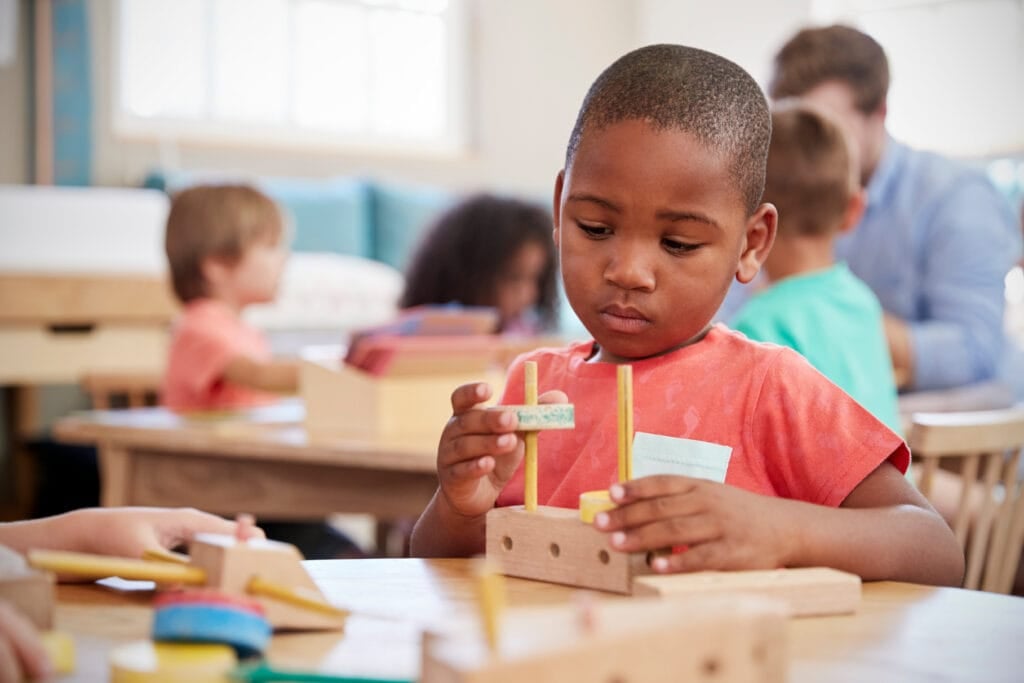
How to Implement Montessori Observation at Home
Observation is a staple in the Montessori classroom, but these observation methods can be beneficial at home as well. Here are a few different ways that they can be implemented:
- Instead of lecturing your child about not eating their vegetables (or other healthy foods) observe what kinds of food they prefer to eat, including which types of vegetables or healthy foods they prefer. Then, using this observation, you can structure their plate accordingly the next time
- While children are playing, you can use observation to determine where the children are developmentally and to set up a prepared environment at home. This may include a different structure to their play area or different materials that will challenge them.
- Observation is not just limited to play. Parents can observe their children in daily activities to determine if they need to change the environment or teach differently in the home. An example of good observation is when a parent notices that their child has expressed interest in dressing themselves, washing their hands, or brushing their teeth. The parent can then set up a self-care station that allows the child to do these activities on their own.
These observational methods can be observed and implemented in the home to help children develop a greater sense of competence and to foster independence and individualization.
For parents that want to implement the
Related: How to do Montessori at Home and Incorporating Montessori Principles at Home





